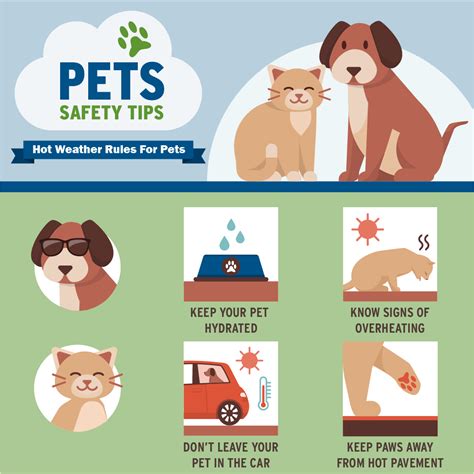Pets are beloved members of our families, and their safety during a disaster is paramount. However, many pet owners are not adequately prepared for the challenges that a natural disaster or emergency can bring. This article will explore the importance of pet safety and disaster relief, providing valuable information and strategies to ensure that our furry friends are protected in the event of an unforeseen event.

Understanding the Risks
According to the Federal Emergency Management Agency (FEMA), over 68% of American households have at least one pet. In the event of a disaster, these pets are highly vulnerable to injury, illness, and even death if they are not properly prepared and cared for. Natural disasters such as hurricanes, floods, earthquakes, and wildfires can disrupt essential services, making it difficult to access food, water, and veterinary care.
Creating a Pet Disaster Plan
To ensure the safety of our pets during a disaster, it is crucial to develop a comprehensive pet disaster plan. This plan should include the following elements:
- Identification: Ensure that your pets have proper identification, such as a collar with an ID tag and a microchip.
- Medical records: Keep a copy of your pet’s medical records in a waterproof container.
- Emergency supplies: Assemble an emergency kit for your pets that includes food, water, a first-aid kit, and any necessary medications.
- Designated safe space: Identify a safe space in your home or community where you and your pets can shelter during a disaster.
Evacuating with Pets
If you are evacuating your home due to a disaster, it is essential to take your pets with you. Here are some tips for evacuating with pets:
- Secure carriers: Use secure pet carriers or leashes to keep your pets safe during evacuation.
- Vaccinations: Ensure that your pets are up-to-date on their vaccinations.
- Food and water: Carry enough food and water for your pets to last several days.
- Identification: Keep your pets’ identification easily accessible.
Pet Disaster Relief Resources
In the aftermath of a disaster, numerous organizations provide pet disaster relief services. The following are some key resources:
- Animal Rescue League: The Animal Rescue League provides emergency rescue, shelter, and veterinary care for displaced pets.
- American Humane: American Humane offers assistance to pets and their owners affected by disasters, including food, water, and medical care.
- Red Cross Pets: The Red Cross provides temporary shelter, food, and veterinary care for pets during disasters.
Effective Strategies for Pet Safety
To ensure the safety of our pets during a disaster, it is crucial to implement effective strategies. Here are some key approaches:
- Animal-friendly shelters: Advocate for the inclusion of pet-friendly shelters in disaster preparedness plans.
- Pet-friendly transportation: Promote the availability of pet-friendly transportation options during evacuations.
- Disaster training: Encourage pet owners to participate in disaster training exercises to familiarize themselves with emergency procedures.
- Community partnerships: Foster collaboration between animal welfare organizations, emergency responders, and local communities to ensure a coordinated response to pet-related emergencies.
Conclusion
Pet safety and disaster relief are essential considerations for responsible pet owners. By understanding the risks, creating a pet disaster plan, and utilizing available resources, we can ensure the well-being of our furry companions during unforeseen events. Through effective strategies and community partnerships, we can create a disaster-resilient environment for both pets and their families.
Table 1: Pet Disaster Supplies Checklist
| Item | Quantity |
|---|---|
| Food | 3-day supply |
| Water | 1 gallon per pet, per day |
| First-aid kit | 1 |
| Medications | As prescribed |
| Collar with ID tag | 1 |
| Microchip | 1 |
| Carrier or leash | 1 |
| Sanitation bags | 10 |
Table 2: Pet Disaster Relief Resources
| Organization | Services |
|---|---|
| Animal Rescue League | Emergency rescue, shelter, veterinary care |
| American Humane | Food, water, medical care for pets |
| Red Cross Pets | Temporary shelter, food, veterinary care |
Table 3: Pros and Cons of Pet-Friendly Shelters
| Pros | Cons |
|---|---|
| Provide safe haven for pets | May not be available in all disaster areas |
| Keep families together | Can be crowded and stressful |
| Reduce pet abandonment | May require additional resources |
Table 4: FAQs on Pet Safety and Disaster Relief
| Question | Answer |
|---|---|
| What is the most important thing to do in a pet disaster? | Create a pet disaster plan and ensure your pets are properly identified. |
| What should I include in my pet emergency kit? | Food, water, first-aid kit, medications, collar with ID tag, carrier or leash. |
| What if I can’t evacuate with my pets? | Contact animal rescue organizations for assistance. |
| What resources are available to help pets in disasters? | Animal Rescue League, American Humane, Red Cross Pets. |
| How can I advocate for pet safety in disaster preparedness? | Support animal-friendly shelters, promote pet-friendly transportation, and encourage community partnerships. |





















